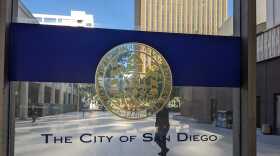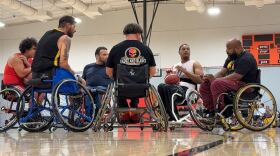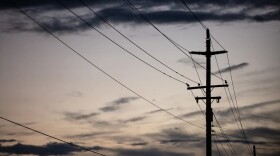Ever since it opened more than 10 years ago, Market Creek Plaza has been seen as an asset to its community. The shopping center at Euclid Avenue and Market Street in southeast San Diego supports local businesses and attracted one of the few grocery stores — and the only Starbucks — to the area. It also provides an amphitheater and other community meeting spaces.
One thing you might not expect the plaza to bring is crime, but people who live nearby say the plaza's trolley station and stores create foot traffic, which attracts drug dealers.
Herbert Taylor lives near Market Creek and said drug dealing and prostitution regularly happen right in front of his house.
"I was sitting outside reading and as a police car drove by, the drug dealer stashed her drugs in my bushes," he said. "I clean the area right around my house and I find drug paraphernalia."
Taylor worries his wife isn't safe at night, which makes him feel unsafe. Other residents like Sean Dudley feel unsafe both at night and during the day.
"We've learned to be very careful in a neighborhood that's ruled by gangs," Dudley said. "During the day you still have to be smart, because you don't want to be in a position where you are alone and in which somebody who doesn't like you will do something to you."
District 4, which contains Market Creek Plaza, had one of the lowest crime rates in San Diego over the past three years, but it still has pockets of crime.
The one-mile radius around Market Creek Plaza saw 50 reports of drug possession in the past year, according to police reports collected by crimemapping.com.
Move one mile away from the plaza and that number drops to just 12.
By comparison, a mile radius in the center of Pacific Beach had 25 drug possession reports in the past year.
The nonprofit Jacobs Center for Neighborhood Innovation funds Market Creek Plaza. Reginald Jones recently took over as the Jacobs Center CEO, and said he's working to correct Market Creek's crime issues but he also points out that increased crime can often accompany business growth.
"Any time you begin development and you begin to increase traffic through development, you're going to be confronted with safety issues," he said.
Southeast San Diego has always been perceived as a high crime area, Jones said, and he thinks redevelopment projects like Market Creek also reduce crime by boosting the economy.
"While we can really boast the development efforts here, we realize that we have to address the safety issue," he said.
But the Jacobs Center recently cut Market Creek Plaza's security force in half, from 12 guards to just six during the day, Jones said.
He said he wouldn't call the reduction a cutback, but instead "restructuring that increases efficiency."
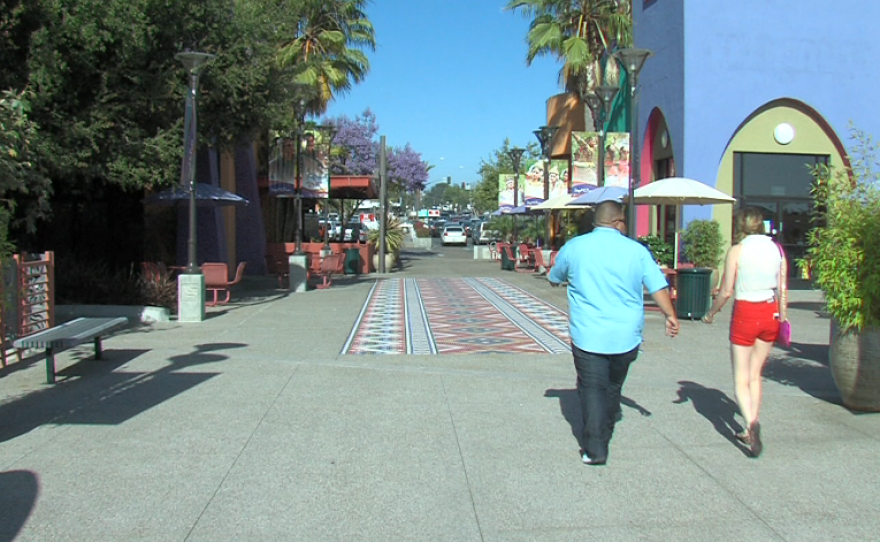
Residents like Dudley say people loiter and deal drugs outside Starbucks and Food 4 Less at Market Creek. They say the plaza's security guards look the other way at, or even hang out with, people causing problems.
"They have security, but I think the issue with them is they didn't understand what they're going to be up against when they built everything," Dudley said. "There's always been crime here, but I think now you have a focus. You have a focal area where these gangs want to take over this area, they want to control it because it's foot traffic."
Jones said he's aware of complaints that security guards are too friendly with loiterers and is working on it.
"We've already talked about that here around increased training for our security force, leading to greater professionalism, as well as knowledge and understanding of ways to approach issues of safety," he said.
Community leader Barry Pollard also lives close to Market Creek. Pollard, who recently lost a bid for City Council, re-started a neighborhood watch program last year to deal with escalating crime.
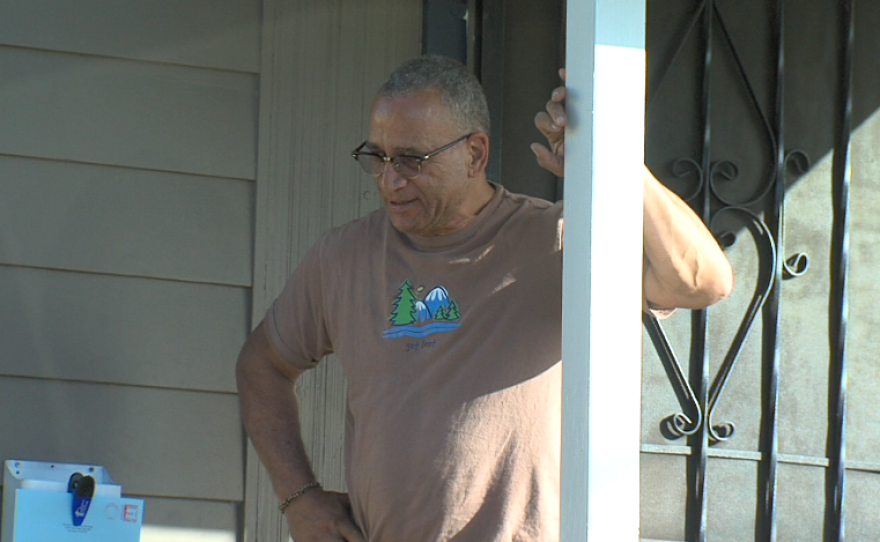
"We're talking about massive drug dealings," he said. "We're not talking about a lid here or small amounts, we're talking about bricks. They were making transactions in the car, late at night, and moving mass quantities of marijuana. Guys with masks on, handguns. So that was the catalyst."
Pollard's group meets once a month and calls each other and the police whenever they see a problem. That diligence means police trust the calls from neighborhood watch members and will respond faster, Pollard said.
All of these efforts have paid off. Crime in Pollard's neighborhood dropped by 50 percent after the watch began, said Akaan Thomas, a community relations officer with the San Diego Police Department who works with the group.
"The neighborhood watch program keeps the eyes on," he said. "They can also give us a call and say, 'Hey, this vehicle comes here at this time, and here's a license plate, and I know this particular house, there's a high traffic coming in and out,' which allows us to do research on those houses and on the persons that are there."
City Councilwoman Myrtle Cole, who represents the district, said she wants more neighborhood watch groups like Pollard's.
"We're good as far as crime is concerned," she said. "We're addressing it when we see it and people are being diligent about going out there and reporting crimes to our police department."
Pollard said the group not only stops crime, it empowers its members. That's definitely true of Herbert Taylor, who still thinks about moving all the time.
"But why run? That doesn't fix the problem," he said. "If there's no viable solution, then the crime and the drugs just moves to the next neighborhood and gets worse.
"You either deal with it or wait for it to come to you," Taylor said.



